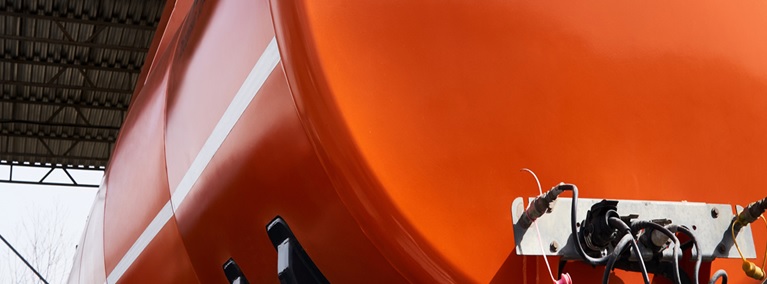
You should be aware of the warning signals of an oil leak regardless of whether or not you have an underground oil tank on your property. Leaks can have a devastating effect on the earth around a tank, not to mention the surrounding ecosystem and any neighboring buildings or infrastructure. A few easy checks will tell you if your underground oil tank is leaking.
If you suspect a fuel tank underground is leaking or in need of replacement, taking soil samples is the best approach to find out. The possibility of petroleum contamination in these samples will be examined. The test works well for detecting leaks in oil storage tanks but may not be appropriate for other liquids.
Soil Testing For Potentially Leaking Tanks
Help from an environmental professional is needed to conduct a soil test. Soil and water quality near the tank can be assessed by this professional. An insurance adjuster will utilize the findings to decide whether or not the property is covered. The insurance company may pay for the repairs after a leak.
Your sample requirements will change based on the volume of your tank. The appropriate sample size will be determined in part by the overall area at risk.
Some leaks seep in slowly, contaminating extensive regions beneath your home’s foundation. These can be extremely disruptive to your household and the neighborhood. They pose a threat to both the quality and quantity of underground water, as well as to public health.
Testing An Oil Tank
Costs associated with remediating polluted ground can be prohibitive. The cost might range from a few thousand to several hundred thousand dollars, depending on the level of contamination.
An oil tank can be easily tested by applying pressure. To check for leaks in a hurry, try this simple method. Tank checks are highly recommended. Make sure you inquire about the tank’s age and any previous repairs with the provider. Inquire about any insurance protection you may be entitled to.
Get a lab analysis to double-check the oil level in your tank. Tanks require a variety of various sorts of testing, each specific to the substances being contained within them.
Price Of Removing AnUnderground Oil Tank
Eliminating an underground oil tank is a costly endeavor. Tank size, location, and other factors affect the overall price. Before deciding on a provider, it is wise to get written quotes from multiple businesses.
In some places, getting about will be more challenging than in others. As a result, it’s possible that extra manpower and specialized tools may be needed. The amount of oil contained in the tank can also have an impact on the final price tag for removal. The expense of correct disposal will increase in proportion to the amount of oil in the tank.
The cost of tank removal could increase if the tank is lined with concrete or filled with foam. It will take a longer period of time as well. A reputable oil tank removal company will employ any means necessary to unearth obsolete machinery.
It’s possible that hazardous substances in the soil will necessitate remediation efforts. There may be a $10,000+ bill if all of these are paid for.
The choice of business to remove an underground oil tank should not be made without first obtaining a written estimate. References should be sought out as well. In order to make an informed decision, it is best to compare the results of multiple estimates. Knowing this, you can pick the most reliable business.
One option for removing an oil tank is to use a hydraulic excavator, however, manual removal is possible. Oil tank removal that involves the use of an excavator will be more expensive because it will take more time and effort.
All Oil Tanks Will Eventually Need Replacing
Life expectancy of an underground heating oil tank is limited. Eventually, this will need its replacement. An underground storage tank should be removed before listing a home for sale. Potential customers may be put off by it.
Depending on the size of the tank, the price to remove an underground oil storage facility might range from $500 to $3,000. The easiest way to guarantee you are getting a reasonable price for the work is to seek written estimates from multiple companies.
Adhering to Laws and Regulations Set ByThe State
Underground oil tanks must be removed in accordance with local, state, and federal laws if you own a home or business. Leaks must be reported, spills must be cleaned up, and contaminated soil must be removed. You won’t have to spend as much time or money on this.
It may not be necessary to remove an underground storage tank if the owner has no plans to switch fuel types. However, you might want to think about replacing it. Given the potential financial outlay involved, it is wise to compare bids from several service providers.
USA Governing Organizations For Tanks
In the United States, oil storage tanks are governed by two major agencies. Underground storage tanks are governed by the federal government’s Department of Energy, whereas oil storage tanks in New York are governed by the state’s Department of Environmental Conservation. Each state has its own set of rules, but generally speaking, they are consistent.
More than 400 underground storage tanks subject to federal regulations are monitored by the DNREC underground storage tank compliance program. The program assures that only qualified people are doing the work and that the tanks are being installed and managed safely.
Upgrades To Tanks May Be Required
There is a requirement to upgrade any underground oil storage tank that is nine years or older. Because even minor leaks can do significant harm to people and the environment, this is crucial.
In some cases, an automatic gauging system is required, however, this will depend on the type of tank being used. If your automatic tank gauging system can measure at least 0.2 gallons per hour, it will help you stay in line with the rules.
It’s important to shop around for the greatest deal when searching for a company to remove your subterranean oil tank. It’s also a good idea to check each person’s references. Doing this before putting your signature on any paperwork is a must. There are a few potential causes for this, one of which is the possibility of recouping the cost of the cleanup through some sort of reimbursement program.
Analyses of the Soil and Water Table
It is crucial to know the proper procedure for having an underground oil tank cleaned and removed, whether you already have one or have purchased a home with one. Threatening ground and surface water supplies, and oil tanks are a major environmental concern.
Soil and groundwater testing is the first step in assessing the severity of a leak. The tests will establish the extent of the contamination and the necessity of any additional cleanup efforts.
In order to describe the nature and degree of contamination, groundwater monitoring wells are often built near fuel leaks. The chemical characteristics of pollutants of concern vary, and so do the dangers they pose to the environment.
To account for seasonal variations in dissolved pollutants, groundwater should be sampled at multiple times throughout the year. For instance, if a storage facility is situated close to a water supply, it would be wise to conduct a groundwater investigation for volatile organic compounds.
Following collection, a soil sample is forwarded to an accredited laboratory for testing. These findings will reveal the levels of recoverable petroleum hydrocarbons in the ground. Typically, this takes no longer than five working days to complete.
The testing is finalized with the help of a flame ionization detector and an ultraviolet fluorescence detector. A vent can be seen in a tank if one is present. Before taking samples, make sure any vents are clear. A tank’s bottom is a good place to collect a sample in the absence of a vent.
Environmental Remediations
The business should do a site investigation, which includes soil and groundwater testing. This will reveal whether or not the tank has been compromised and is leaking. It will also tell you if the pollution level is high enough to warrant notification. The DEP will require additional action if pollution levels are reported as exceeding the threshold.
If the findings of the soil and groundwater testing indicate a high level of contamination, environmental remediation services will need to be enlisted. Homeowners who have an underground oil tank should seriously think about having the tank removed by a qualified service.










